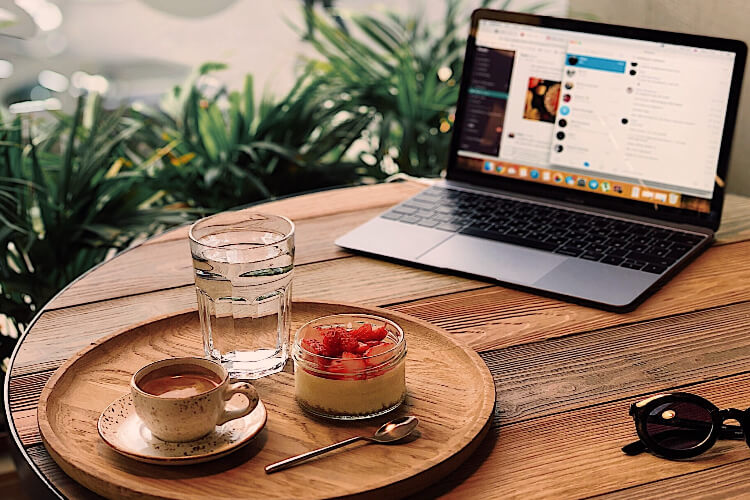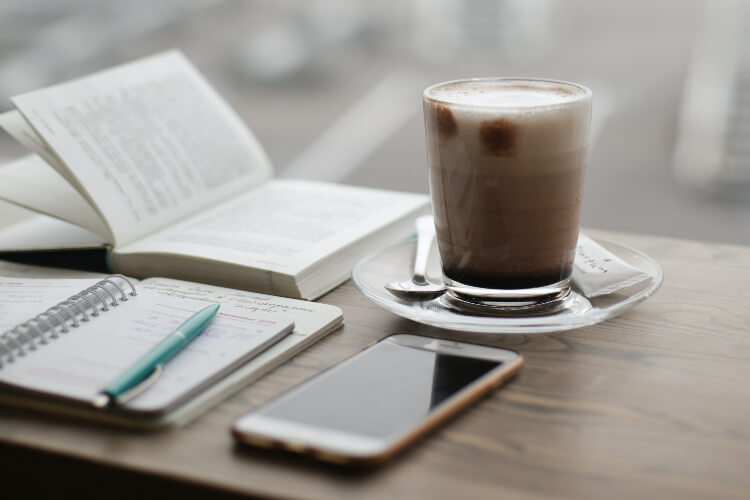
How Many Coffee Beans Per Cup
The question of how many coffee beans per cup is one of the most frequently asked questions, and for a good reason! The flavor and smell of brewed coffee rely on various factors and knowing the correct ratio can make a difference in your morning routine. In this article, I will teach you everything you need to know about the perfect balance. true -coffee-machines
The answer is not as simple as you might think! Coffee beans are typically measured in grams and not cups, but when you’re shopping for coffee by the pound, that’s how it’s sold. Find out what the scoop is on this question in this article!
What is the Average Number of Beans per Cup?
- Many variables go into how many coffee beans you’ll need per cup – the type of bean, the grind, the brewing method, etc. But on average, you can expect to need about 2 tablespoons (10 grams) of coffee per cup. This means that if you’re making a pot of coffee with 10 cups worth of water, you’ll need about 20 tablespoons (100 grams) of coffee beans.
- Of course, this is just a general guideline – your mileage may vary depending on your specific coffee needs. But it’s an excellent start when figuring out how much coffee to buy. True. So, what is the answer?
- How many tablespoons are in a cup of coffee beans?. That’s because it’s not a matter of how many beans or scoops you use – but how strong you make your brew. It really depends on your personal taste. For example, if you like your coffee to be very sweet and milky, you will likely want to add three or four tablespoons per 6-ounce cup (1/4 pound) of ground beans. If you prefer a lighter roast with more body and less acidity, try starting with 3 tablespoons per 6 ounces (1/4 pound) of ground beans. You can also experiment by adding another tablespoon at each stage to see which way works best for you.
The goal isn’t to start with the right amount but with the perfect amount for your preferences. As for the number of scoops, it also depends on how strong you like your coffee. If you want a milder cup of joe or are trying to cut back on caffeine, try 1/2 – 2 tablespoons per 6 ounces (1/4 pound) of ground beans. On the other hand, if you love a bold brew and have a high tolerance for caffeine, start with 3 – 4 tablespoons per 6 ounces (1/4 pound) of ground beans and add more to suit your taste.

What is the Minimum Number of Beans Per Cup?
It is often said that the minimum number of coffee beans per cup is two. However, this number can vary depending on the coffee’s strength and the cup’s size. For a more robust cup of coffee, more beans may be used. For a weaker cup of coffee, fewer beans may be used. The size of the cup also plays a role in how many beans are needed per cup. A small cup may only need two beans, while a large cup may need four or more beans.
It depends on the cup size because 12 ounces is standard for most cups. However, some larger cups may have 16 or more ounces. The longer coffee sits in the pot, the stronger it will be. This means that if you are making a pot of coffee for people to drink throughout the day, depending on how much they take at once and how strong you want it to be will determine how many beans you put in initially.
What is a French Press? A French press can be described as a metal container with a mesh filter, and the plunger mechanism makes this ideal for grinding fresh beans and brewing coffee without paper filters. Espresso Beans The use of espresso beans has become popular over the past few years. This is because it makes a rich coffee that can be used differently.
The only problem with espresso beans is that they are more expensive than regular ground coffee and do not taste as good as fresh ground coffee. If you want to make ‘expresso’ at home, you can use a Moka pot because it allows you to brew your own.
You will need water, fine ground espresso beans, a metal pot, and a heat source (usually a stovetop). It is essential to know that when you make expresso, the bean’s flavor is extracted faster, and the consistency comes out thicker because of its forcefulness.
How Many Beans are in a Cafe Grande Size?
- Coffee is one of the most popular beverages in the world, and there are many different ways to make it. The number of beans you use per cup can vary depending on how you like your coffee. A grande cafe generally uses about 3 tablespoons of coffee beans, equivalent to about 21 grams.
- This will produce about 2-3 cups of coffee. While there are many different coffee beans, they fall into two categories: Arabica and Robusta. Arabs account for 80% of world production, but most coffee lovers prefer to consume the more flavorful Robusta than Arabica.
- When you think of Starbucks, you are probably thinking about their signature coffee blend made from a combination of both beans. They call it their ‘Blonde Roast,’ but everyone knows it’s just a darker-flavored Robusta blend. So then, why is the majority of coffee consumed worldwide made from Arabica?
According to this article from Business Insider, there is an inverse relationship between quality and quantity when choosing your beans. Most people prefer the flavor of Arabica, but it’s harder to grow and is more expensive. Robusta is easier and cheaper to develop, but the taste isn’t there. But I don’t want to leave you on that negative note. You can also do some positive things with too much Robusta in your brew. For example:1) Burn it2) Use it as mulch3) Feed it to your lawn4) Feed it to your dog (check out this infographic from Fordham University)5) Make a cup of coffee – It still has caffeine.

- We all know that coffee is made from beans, but have you ever wondered how many coffee beans are in your cup? The number of beans per cup might vary significantly depending on the cup size, the kind of bean, and the grind. This comprehensive guide will break down how many coffee beans are in a cup so you can make the perfect brew every time.
- A typical coffee mug holds 12 ounces of liquid, about 355 milliliters. Most coffee mugs will hold close to this amount, give or take a few ounces. A 12-ounce cup of coffee generally has about 60 milligrams of caffeine. This means there are about 6 grams of coffee beans in a typical cup of coffee.
- However, the bean’s grind and the bean’s type can affect the amount of caffeine in your cup. For example, a coarse grind will have less surface area exposed to water and therefore extract less caffeine. A finer grind will have more surface area exposed to water and extract more caffeine.
The type of bean also affects the amount of caffeine in your cup. For example, Robusta beans contain more caffeine than Arabica beans. If you’re
Why do Different Coffee Brands Use Different Numbers of Coffee Beans to Make a Cup?
Different coffee brands use other numbers of coffee beans to make a cup for a few reasons. The first explanation is that different brands’ bean-to-water ratios vary. The use of differently roasted beans by various brands is the second justification. Using a finer grind by some brands than others is the third justification.
The bean-to-water ratio is the most critical factor in determining how many coffee beans you need per cup. This ratio will vary depending on the coffee beans’ brand, roast, and grind. A good starting point is to use 2 tablespoons of coffee beans per 6 ounces of water. From there, you can adjust to taste.
- Some brands use more heavily roasted beans than others. If you’re using a dark roast, you may need to use fewer coffee beans than you would with a lighter roast. This is because dark roasts have less caffeine and are less bitter than light roasts.
- Some brands also use a finer grind than others. If you’re using a coarse grind, you may need more coffee beans than you would with a finer grind. This is because coarse grinds have more surface area and release more flavor into the water. As with any other beverage, you can use more coffee beans to make more concentrated coffee. Remember, however, that this will also produce a more robust flavor. Some people like their coffee with extra foam, and others prefer a lusciously thick brew.
- If you prefer extra foam, use fewer coffee beans, so it doesn’t become too strong for your taste. If you want to avoid having your coffee be too strong but still intense enough, increase the water you use to dilute the flavor. Or else add some milk or sugar to reduce the taste’s intensity. For more robust coffees, use coarse grinds or very little ground coffee per cup of water and steep in hot water for several minutes.
- For lighter, fluffier coffee with subtle flavors, use a medium grind and increase your proportion of water. Don’t worry if your coffee doesn’t taste good when you first purchase it. This can actually be a blessing since you won’t have to get anything else in the future. Try it out and see what happens. Let your coffee machine heat up, and let it run with water. Only the flavor will stay in the device and not get brewed into your coffee.
If possible, ensure that you heat or cool down the water before putting it in the machine. A big mistake many make when brewing coffee is not using the proper amount of coffee beans. The appropriate ratio of ground coffee to water is six ounces of water for
Conclusion
We hope this guide has helped you figure out how many coffee beans you should use per cup. Remember, the number of coffee beans you use will depend on your personal preferences, so don’t be afraid to experiment a little bit. And if you’re ever in doubt, ask your local barista — they’ll be happy to help you. true
Now that we’ve answered the question, “how many coffee beans per cup?” it’s time to get brewing! No matter how you like your coffee, start with fresh, quality beans for the best flavor. Experiment with different grind sizes and brewing methods until you find your perfect cup of coffee. And don’t forget to enjoy the journey – after all, that’s half the fun of being a coffee lover!
